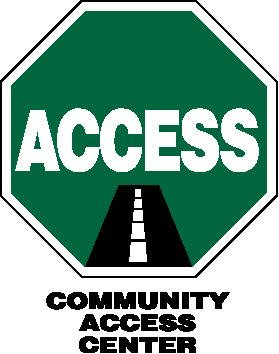Reaching out to your community is an important practice when you write for a blog that covers such a wide range of disability as “Where it’s AT”. Honestly, the broad scope of experience across the disability community is so vast, that to only offer the perspective of the “Where it’s AT” staff would be a disservice to our readers.
In order to make that truth actionable, I recently reached out to a handful of California’s AT Advocates to see if they would like to contribute their professional perspectives to our body of work. One of the AT Advocates I connected with, Luke Hsieh from Community Access Center (CAC), sent in this contribution which not only draws from his extensive professional knowledge, but also lends a candid expression of his lived experience:
When Kathrine from Ability Tools asked me to write an article for her, the first thing that came to mind was, Water Floss, and I told her as much. Now, since she is in Sacramento, and I am in Riverside, even without the social distancing, I could only imagine the confused look on her face. “But why water floss?”, you might want to ask, before I confuse any of you any further, a little context is in order.
You see, due to birth complications, I was born with cerebral palsy. This, fortunately or unfortunately, left me with about roughly 60% to 80% of all developmental functions, adding 4 years of college and 2 years of graduate school and some X hours of private tutoring. I am left with the functional ability of a somewhat wise, but extremely old cat (Excuse the private joke here), so dental hygiene has always been a struggle. I started using an electric toothbrush in my 20’s, and now my toothbrush is bluetooth enabled, reminding me which tooth I neglected, which tooth I over-brushed, and how long I have brushed my teeth. Yes, I have reached a point where I need my toothbrush to remind me how long I need to brush my teeth.
If I flossed too hard, my gums started to bleed… in the end, I gave up on flossing altogether.
Flossing, however, is a whole different story. If I flossed too hard, my gums started to bleed, or the wire got stuck in my teeth. In the end, I gave up on flossing altogether. I did not floss for 20 years until I found a repurposed water pistol. Indeed, had I been 40 years younger, Waterpik flosser feels like something I would shoot water at my sister with, but now, I must be content with shooting water at my own teeth. Now I can comfortably floss every day and not rely on my dentists. Waterpik flossers, like the Handy-can opener, have therefore been added to the list of inexpensive devices that allow me to do things I had not been able to do before.
Sometimes in life, there are incremental technological improvements that make the lives of people with motor function related disabilities less miserable. Firstly, there was Apple’s lightning cable and USB-C for device connectivity, then comes the wireless charging and smart-home configuration, and of course, self-driving cars are just around the corner. New technologies are exciting, aren’t they?
Luke Hsieh is the Assistive Technology Advocate at Community Access Center (CAC), the Independent Living Center that serves Riverside California.

For more daily living devices to explore and try out, visit the Ability Tools NATADS Inventory, reach out to your local Independent Living Center (ILC) and talk to their AT Advocate, or reach out to your local Device Lending and Demonstration Center (DLDC) and ask for a Device Demonstration of their Daily Living items.


